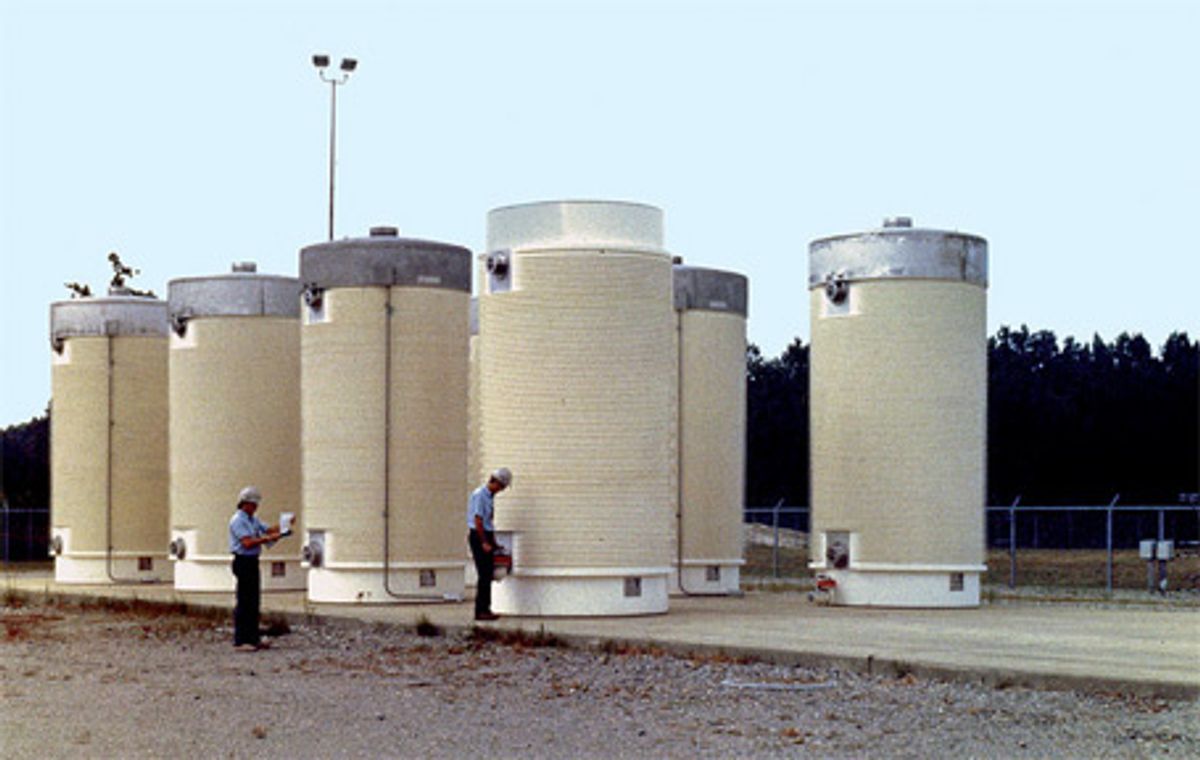Editor's Note: John Boyd is an IEEE Spectrum contributor reporting from Kawasaki, Japan. This is part of IEEE Spectrum's ongoing coverage of Japan's earthquake and nuclear emergency. For more details on how Fukushima Dai-1's nuclear reactors work and what has gone wrong so far, see our explainer and our timeline.
A newly released report from the International Panel on Fissile Materials contains information that implicitly bolsters the case for moving spent fuel out of cooling ponds and into dry cask storage, both in the United States and in most other parts of the world as well. After 9/11 it already was apparent that fuel in cooling ponds could make a tempting target for terrorists--and one much easier to hit than reactor cores. Now, in the wake of the dangerous fire in the Fukushima cooling pond, the case for accelerating dry cask storage is inescapable.
With plans for permanent disposal of nuclear wastes stalled just about everywhere except for Finland and Sweden, spent fuel should be moved as fast as possible out of cooling ponds and into dry casks.
What does that mean? As the Fissile Materials report usefully explains, "In dry cask storage, spent fuel assemblies are typically placed in steel canisters that are surrounded by a heavy shielding shell of reinforced concrete, with the shell containing vents allowing air to flow through to the wall of the canister and cool the fuel. A typical dry cask for Pressurized Water Reactor fuel contains about 10 tonnes of spent fuel, roughly one half of an annual discharge from a 1 GWe reactor." The large cylindrical containers (seen in the Nuclear Regulatory Commission photo above) generally are located close to reactor sites in the United States, but are much "harder" than the spent fuel ponds also typically found at the sites.
Worldwide, about 90 percent of spent fuel is in vulnerable cooling ponds and only a tenth in dry casks, according to the report. The numbers are somewhat better for the United States, where, of roughly 64,500 tonnes of heavy metal (uranium and plutonium, basically), 15,250--almost a quarter of the total--is in dry casks. Princeton University's Harold Feiveson , a participant in the ongoing fissile materials studies, points out that as much as 50,000 tonnes or more could be promptly moved to dry casks, having already cooled for the requisite five years.
(The U.S. reactor fleet produces about 2,000 tonnes of spent fuel a year, so of the 65,000 tonnes of total spent fuel, only about 10,000 tons still needs to be in cooling ponds.)
Robert Alvarez, a former senior official in Bill Clinton's Energy Department, recently made the same argument. Writing in the Huffington Post, Alvarez said that the United States “should promptly take steps to reduce these risks [associated with cooling ponds] by placing all spent nuclear fuel older than five years in dry, hardened storage casks [as] Germany did 25 years ago. It would take about 10 years at a cost between $3.5 and $7 billion. If the cost were transferred to energy consumers, the expenditure would result in a marginal increase of less than 0.4 cents per kilowatt hour for consumers of nuclear-gneerated electricity."
Dry casks at Fukushima, Alvarez notes, weathered the tsunami and earthquake unscathed, unlike the reactors and cooling ponds.
Arguably, with 9/11 the large quantity of U.S. spent fuel being held in unhardened cooling ponds already represented a national emergency. Now, with the collapse of plans for a permanent geologic spent fuel repository at Yucca Mountain, Nevada, the situation is more urgent than ever.
The logic behind the selection of Yucca Mountain grew from a perception that the United States should just pick a place to put its spent fuel, already, and get on with the job. Since the area around the U.S. nuclear weapons testing area was already highly contaminated, what serious objection could there be to putting well-secured reactor wastes in the vicinity? But it turned out that Nevadans objected strenuously, and with their voices ever more significant in closely contested presidential elections, they ultimately prevailed and killed the project. As it happens, says the fissile materials report, Yucca Mountain turns out to have been "a poor choice on technical grounds." Ideally, spent fuel should be stored in oxygen-free conditions, for example in deep granite or clay. But Yucca Mountain would have been exposed to flows of oxygen-rich water.
The mission of the International Panel on Fissile Materials is to establish a technical basis for securing, consolidating and reducing stockpiles of highly enriched uranium and plutonium, so that they will be less available for use in nuclear weapons by errant states or terrorists. This latest report, however, has special salience because of its relevance to nuclear accident scenarios and power plants security.




